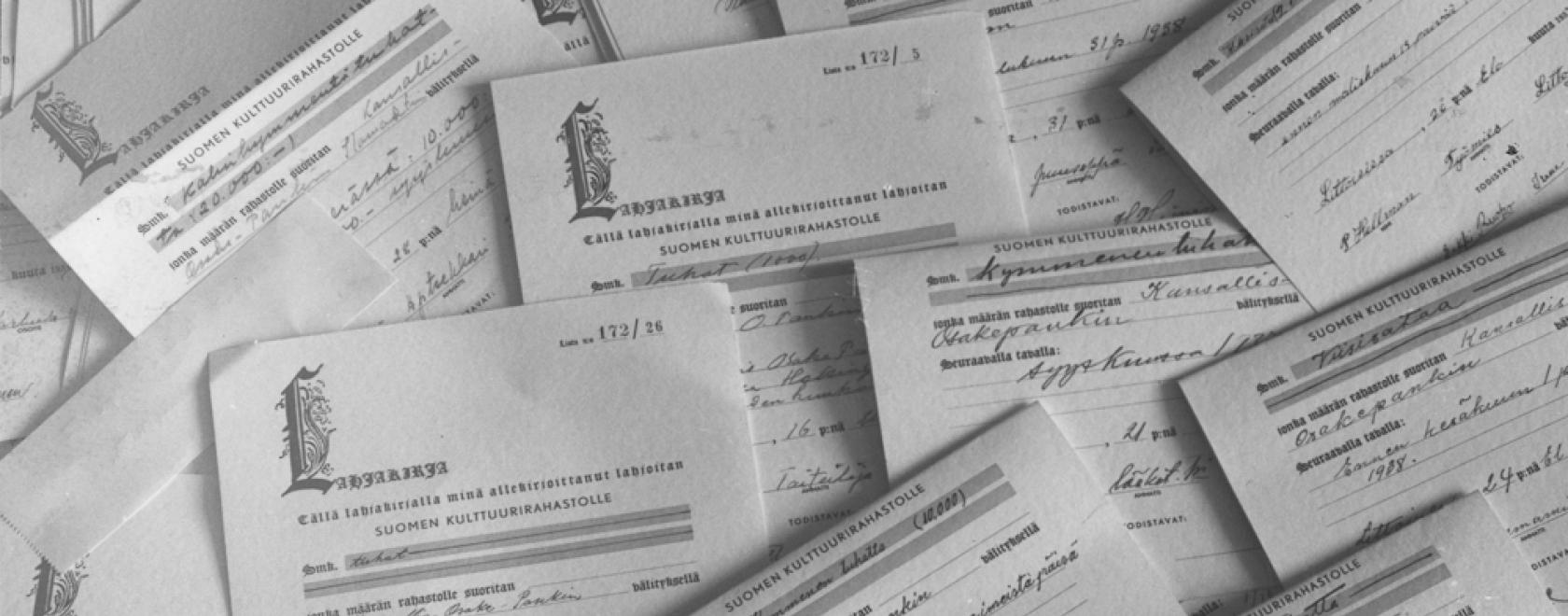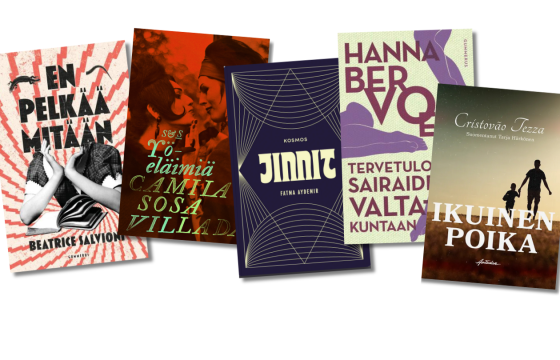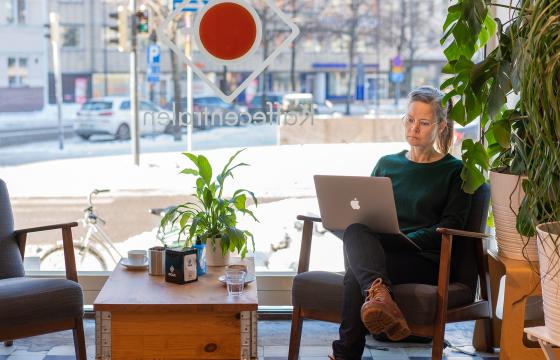
The Beginning
The prime mover and force behind the campaign was the historian L.A. Puntila, who became later the first Secretary General, then in turn Chairman of the Board and the Supervisory Board. At the beginning of 1937, he penned an article in a major weekly paper, in which the idea of a Finnish-speaking cultural foundation was published for the first time. The proponents were keen to turn the idea into reality as soon as possible, so the Association of the Finnish Cultural Foundation was formally established on Kalevala Day, February 28, 1937. The initial funds for the Foundation were provided by donations from a bank director, Mauri Honkajuuri, and a teacher, Juho Jäkälä.
Collections
The base capital for the Foundation was provided by collections from the population at large. The first charter collection was widely marketed in the press, a unique development for the time. A total of 170,000 Finns took part in the charter collection, carried out by some 30,000 schoolchildren in 1938. It generated 2,7 million marks (950,000 euro) for the new Foundation.
In addition to the charter collection, a separate collection was also arranged for more affluent donors. The first such donor was Helmi Nuuttila, a farmer's widow from the rural parish of Asikkala. She was followed by many others from all walks of life, including both affluent businessmen and people of more modest means.
In addition to private individuals, companies also began to sign up to support Finnish cultural pursuits. By 1939, the Foundation had amassed 20 million marks (7 million euro) in donations and bequests, of which one quarter came from companies. The Finnish Cultural Foundation was founded on February 27, 1939, when the capital collected by the Association was transferred to the new organisation. The Foundation awarded one million as grants on its first Annual Gala held on the same day.
Since the beginning, the Foundation's donors have included a broad cross-section of people. Heikki Huhtamäki donated a majority shareholding in the Huhtamäki company to the Foundation in 1943. Anna Palmroos, a teacher from Pori, made two significant donations in 1937 and 1942 out of money she had saved from her salary. Thriftiness has been a feature of many of the Foundation's donors over the years.
Finns took part in a second major collection for the Foundation on the occasion of its 25th anniversary in 1964, when three separate collections were organised. These generated 4.3 million marks (8.5 million euro) from 561,000 donors.
Involving the Whole Country
The focus of the Foundation's activities has always reflected the spirit of the times. During the early years and the war, uniting the nation was high on the agenda, and promoting the arts and the sciences was seen as an important way of achieving this. In the 1950s, the emphasis shifted to promoting awards and competitions and general education.
In the 1960s, a more active approach to developing the arts nationally and regionally emerged as a general trend. Thus, the Foundation turned its attention to the provinces and established a chain of 17 regional funds, which cover the entire country. The regions nowadays account for one third of the total sum distributed in the form of grants. Thanks to its regional funds, the Foundation is present across Finland. While following the Foundation's general policies, the regional funds take local conditions and local needs into account.
Towards the end of the 1960s, the political climate in the country changed, and the Foundation decided to take a lower profile in cultural policy and public debate. Instead, it remained in the background, content to support the arts and sciences with grants. However, the amount of grant money did not increase in real terms between the mid-1960s and mid-1980s.
Since the mid-1990s, the Foundation's assets have grown rapidly. This has now made it a significantly more important source of funding than ever before. At the same time, the Foundation has had to reassess its overall role, particularly in relation to the cultural policy pursued by the state and the municipalities. The Finnish Cultural Foundation remains committed to its vision of national solidarity and the role the arts and sciences can play in the society. The Foundation also believes that today Finnish culture has more to give abroad than ever.


